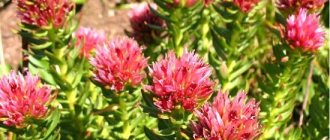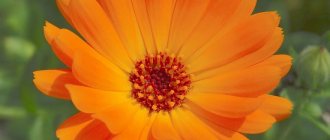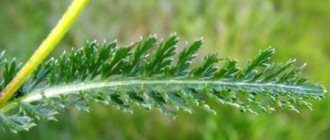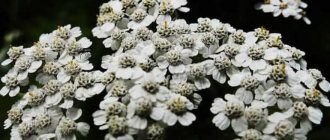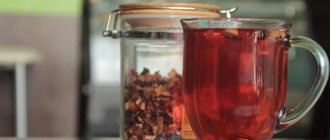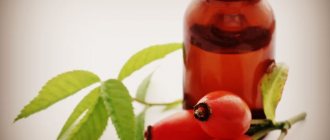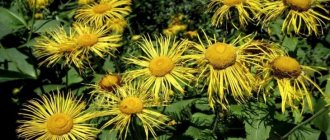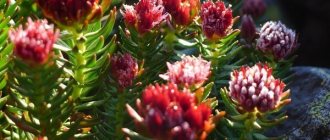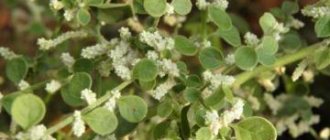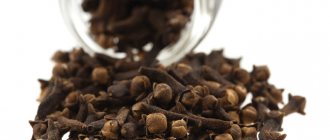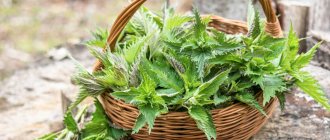The benefits and medicinal properties of golden root were discovered not so long ago. The plant began to be used in cosmetology, medicine and even cooking.
However, before use, you need to read the contraindications and instructions so as not to harm the body.
Properties:
- Rhodiola rosea, description of the plant, what it looks like in the photo
- Ingredients and positive qualities
- What are the benefits of golden root for women, how is it used in gynecology?
- In what cases is it recommended to use golden root for men?
- Recipes for folk remedies with golden root
- What properties does the tincture have?
- How to make alcohol tincture correctly
- The use of Rhodiola rosea for the treatment of children and during pregnancy
- In what cases is use contraindicated?
Rhodiola rosea, description of the plant, what it looks like in the photo
The herb golden root has two other names: Siberian ginseng and rosea rhodiola (acquired this name due to its appearance).
Description and characteristics:
- The plant is perennial and dicotyledonous.
- The root system is thick and powerful. The main root is studded with additional appendages.
- Contains several stems at the same time (from two to fifteen pieces). The stem is erect, does not branch. It grows up to a maximum of fifty centimeters.
- The leaves are oblong, ovoid or elliptical in shape (in rare cases they acquire sharp shapes).
- The buds are yellow in color, there are many inflorescences.
- The fruits are green and small in size.
- Habitat: lawns, near lakes or rivers. It can also grow in other places where there is high humidity.
- The taste is bitter, there is viscosity. When fresh, the smell of the root is similar to that of a rose.
Botanical characteristics
Rhodiola rosea belongs to the Crassulaceae family. Both names are beautiful and, one way or another, characterize the plant. The epithet “pink” was not given to it in vain - when broken, the rhizome is yellow in color and emits a pleasant aroma, slightly reminiscent of the smell of a rose. It is covered on top with a skin that has a noble bronze-golden hue. Rhodiola rosea. Protruding rhizome The natural place for Rhodiola rosea to grow is between stones. The rhizome is thick and short, usually protruding above the ground.
Thickened shoots with linear leaves extend from it, at the ends of which yellow inflorescences form. In nature it blooms in mid-summer.
Ingredients and positive qualities
The root contains many active biological substances:
- carbohydrates;
- essential oils;
- alcohols;
- steroids;
- alkaloids;
- phenols;
- tannins;
- manganese;
- silver
- zinc;
- copper;
- flavonoids;
- succinic, oxalic, malic and citric acid;
- terpenoids.
Thanks to these substances, there is a positive effect on the central nervous system. Efficiency increases, memory and concentration improve. Has a beneficial effect on all brain processes.
The plant is also used in the following cases:
- Strengthening the immune system.
- Breakdown of fat mass.
- Stabilization of blood pressure.
- Improvement of digestive tract processes.
- Destroying pathogenic microorganisms.
- Eliminate inflammation.
- Improvement of vascular condition.
- Removes toxins from the body, eliminates tobacco addiction.
- When cancer is detected, it is used to stop the growth of metastases.
- Activates the functioning of the endocrine system.
- Used as a rejuvenating agent.
- Reduces sugar and increases oxygen levels in the blood.
- It has an anti-inflammatory and healing effect and is used to treat skin lesions.
- Can be used to treat adults of any gender and children of a certain age. But before starting treatment, you need to find out the details from your doctor and take into account the pros and cons.
Let's watch a video about golden root and its medicinal properties:
Chemical composition
The widespread use of golden root as a medicinal plant is explained by its chemical composition. The following components were found in the underground part of the plant:
- Tyrosol;
- Organic acids - malic, citric, succinic and oxalic;
- Salidroside;
- Cinnamon alcohol;
- Rosavin;
- Carbohydrates;
- Glucose, sucrose, fructose and sedoheptulose;
- Terpenoids;
- Essential oil;
- P-sitosterol;
- Phenolcarboxylic acids and their derivatives;
- Tannins;
- Flavonoids - astragalin, tricine, kaempferol, 5-glucoside, kaempferol, 7-rhamnoside, acetylrodalgin, rhodionin, 8-methylherbacetin, tricine 7-glucoside, rhodioline and rhodoosin;
- Anthraquinones;
- Alkaloids;
- Microelements - manganese, copper, silver and zinc.
Depending on where it is grown, golden root essential oil may contain the following components:
- Myrtenol, brown alcohol and geraniol (Bulgaria);
- Phenylethyl alcohol (India);
- Octanol and geraniol (China).
The aerial part of the golden root contains organic acids, phenols, flavonoids, phenolcarboxylic acids, coumarins and tannins. The stems of the plant contain p-tyrosol, gossypetin, trans-p-hydroxycinnamic acid, gallic acid and rhodiol flavonoside.
What are the benefits of golden root for women, how is it used in gynecology?
Golden root in gynecology is used as an additional therapy in diagnosing vaginitis and colpitis.
Rhodiola rosea is especially useful during menopause, when the female body stops producing many sex hormones. Because of this, the vaginal mucosa suffers, which leads to a burning sensation and dryness. It also leads to bacterial infection, which goldenseal helps get rid of.
Tannins restore the mucous system; a special film is formed on its surface, which serves as protection against inflammatory processes and the spread of bacteria.
Siberian ginseng is also used in gynecology as a strong analgesic, and for antimicrobial and antifungal effects.
If you use warm baths based on golden root decoction, you can quickly restore the acid-base environment of the vagina.
You can use the herb only after the recommendation of a gynecologist; self-medication is dangerous to health. Particular care is needed during pregnancy and feeding.
A wonderful gift of nature
And a few more words about my personal impressions of this plant. When you meet it in nature, in the mountains, under the crowns of majestic cedars, surrounded by snowy peaks in the distance, you experience real delight at the beauty of this whole world, at the fact that nature created this priceless gift and gave it to man. Golden root is a real gift of nature, useful, beautiful, amazing. In the garden, it pleases the eye in early spring - as soon as the snow melts, reddish buds appear on the tops of the rhizomes protruding from the ground. They begin to grow quickly, form shoots and, finally, Rhodiola blooms - a compact lush rosette, all strewn with yellow, slightly fluffy inflorescences. Golden root is a real gift of nature, useful, beautiful, amazing.
In what cases is it recommended to use golden root for men?
For males, Siberian ginseng is used:
- for the treatment of the intimate area;
- for diseases of the genitourinary system;
- to increase sexual activity;
- upon detection of cancerous tumors;
- bacterial infection.
This herbal remedy makes the male body resilient to physical activity, strengthens immunity and muscle tone. The grass is indicated for athletes. After just a couple of hours, the blood is saturated with oxygen and the number of red blood cells increases, which causes additional energy, the body becomes more resilient.
You should not get carried away with homeopathic medicine based on golden root, since its effect is quite strong.
Indications for use
The healing properties of golden root are used to treat pulmonary tuberculosis, hypotension, diabetes, and also in cases of:
- Amenorrhea;
- Hypotension;
- Uterine bleeding;
- Oxygen starvation;
- Sarcoidosis;
- Neurosis;
- Asthenic conditions;
- Impotence;
- Mountain sickness;
- Nervous and physical fatigue;
- Prostatitis;
- Increased mental work.
In folk medicine, decoctions and infusions of golden root are used to treat trachoma, diarrhea, respiratory infections and malaria, and the extract is used for periodontal disease, sore throat and small cuts.
Recipes for folk remedies with golden root
Non-traditional methods include preparing tinctures, decoctions, ointments and lotions. To make a medicinal product, you can use any part of the plant: roots, flowers, foliage and stem.
Here are some recipes.
Recipe No. 1. Purpose: treatment of inflammation of the cornea, oral cavity, wounds.
Cooking principle:
- Fifty grams of Rhodiola rosea are used per liter of water.
- The product is poured into a container and left to simmer for 10 minutes over low heat.
- Then it is infused and cooled. Use a solution for lotions.
- Perform the procedure several times a day, keeping the lotion on the painful area for half an hour.
Recipe No. 2. Purpose: cure colds, gastrointestinal disorders.
Application principle:
- Twenty grams of golden root are taken per liter of water.
- Boil in a water bath for 10 minutes.
- Pour the finished product into a thermos and leave to infuse for a day.
- Filter before use.
- Drink a large spoon up to three times a day half an hour before meals.
Recipe No. 3. Purpose: eliminating pallor and laxity of the skin.
Cooking principle:
- Take a teaspoon of Siberian ginseng for one glass of boiling water and leave to infuse for an hour at room temperature.
- Wipe the skin with the prepared solution daily in the morning and evening.
Tea recipe
Purpose: improves brain function, releases the happiness hormone, helps get out of depression and reduces emotional stress.
Cooking method:
- For 2 liters of boiling water, 1 teaspoon of the main substance.
- Cover the container for several hours and then strain.
- Take as regular tea several times a day.
- You can add honey for taste.
Before using one of these recipes, you need to make sure that there are no contraindications.
What properties does the tincture have?
Alcohol tincture has anti-inflammatory, sedative and antidepressant properties. The tincture is prescribed as a prophylaxis against colds, for hypotension, to normalize blood pressure and as an adaptogen.
Since the plant is good at lowering blood sugar, the tincture can be used for diabetes.
The tincture is taken 20 drops twice a day before meals.
It is forbidden to take the tincture for more than 5 days, as addiction is possible and there will be no therapeutic effect.
Let's watch a video about the use of Rhodiola rosea to treat various diseases:
Medicinal properties of the plant
Golden root is one of the best stimulants of all processes in the human body. It activates mental activity, improves physical and mental well-being. The plant normalizes metabolic processes and energy metabolism.
Rhodiola rosea (also called golden root) increases the body's defenses, calms, and normalizes sleep.
Therefore, Rhodiola rosea can be used for the following conditions:
- when you need to restore strength and increase endurance;
- in the treatment of neuroses that are provoked by constant stress;
- with unstable blood pressure;
- for the treatment of ligaments and joints.
You can also use golden root for anemia and frequent inflammatory and autoimmune conditions.
Maybe
How to make alcohol tincture correctly
To prepare your own tincture with alcohol, you will need:
- alcohol or vodka – 250 grams;
- 25 grams of dry root.
Operating principle:
- Grind the raw material to a powder, along with flowers and roots. Pour the product with vodka and leave for 14 days in a dark, cool room, you can use a cellar.
- Strain before taking.
If a person suffers from chronic low blood pressure, then consult a doctor before using the tincture.
In this case, it is recommended to take five drops and add a drop to the dosage every day, observing the condition.
The use of Rhodiola rosea for the treatment of children and during pregnancy
In therapeutic pediatric therapy, Rhodiola can be used when the child turns 12 years old. The plant is prescribed to children with low activity. In hyperactive children, grass may cause anxiety and insomnia.
Golden root is prescribed before the age of 12 only for frequent colds, or if there are problems with concentration.
During studies, the plant is taken during exams or tests, as the root improves brain function and relieves stress.
There is no prohibition on treatment during pregnancy.
However, you should not prescribe a course of therapy on your own; you need to tell your doctor everything and rule out side effects.
Where can I get medicinal rhizomes?
No, I'm not going to keep you busy with empty talk. The fact is that here, in central Russia and the Urals, the golden root culture has already been firmly established in our gardens and vegetable gardens; we have learned to grow this miracle plant near our home. Of course, I’m not very sure that this home-grown golden root is exactly like the golden root - the legend of the Altai Mountains, because after all, we grow Rhodiola rosea not in the mountains, but in our garden plot. But all the same, I believe that at least some good quality has been preserved in our homemade Rhodiola rosea, at least for our efforts and our faith in this plant. True, our science is silent on this matter, but I will say from myself: I prepare my tincture from homegrown roots (I prepare the tincture, since I have little root and my supplies for tea are not enough), I have been using it all the time lately and do not feel the difference . So try growing this plant in your garden...
Try to look for rhodiola rhizomes in the markets in the fall. These rhizomes are very noticeable and difficult to confuse with others. Buy several at once. Golden root is a dioecious plant (separate plants with female and male flowers). Only in this case will the golden root give you seeds after flowering. In the fall, plant the rhizomes in the garden bed not very deep. Sprinkle earth on top (a layer of 3-4 centimeters), compact it with your palm, mark the place with a peg and wait for spring. The first shoots will appear early in spring. Very soon Rhodiola rosea will bloom. When the plant fades and the leaves begin to take on a reddish tint, carefully cut off the flower heads, put them in a warm place (with ventilation) and when the heads dry, check whether Rhodiola has given you seeds. If you find seeds, save them and sow them in the garden in the spring (how to grow golden root from seeds - a little later). The plants will remain with you in the place where you planted them last fall. By the new autumn, the stems will fall off, darken, and the golden root, as they say, will go underground for the winter. And in the spring there will be new shoots, new flowers and, possibly, new seeds. And so on for 4-5 years. And there you can carry out the first audit. Carefully dig up the rhizomes in the fall and, if they have grown enough, divide them into parts (the rhizomes simply break, but, of course, this must be done carefully). Take some of the harvest for yourself, and plant the other again in the ground, it will give rise to new plants.
Collected rhizomes - wash the crop from the ground and dry it properly in the air, but not in the sun. When the water has dried, the rhizomes should be cut (preferably lengthwise) into strips and dried in the dark, preferably not in a very hot oven. It is convenient to store them in a canvas bag and also in dryness and darkness, making either tea or tincture from them if necessary...
In what cases is use contraindicated?
List of contraindications:
- children under twelve years of age;
- hypotension;
- frequent headaches, migraines;
- excitability;
- heat;
- insomnia;
- mental disorders associated with attacks of aggression;
- heart failure and heart disease.
In other cases, it is also important to exercise caution; each body can react to herbs differently.
So, golden root has many healing properties, you can use it after the appointment of a specialist. The main thing is not to increase the dosage and course of treatment. .
What is contained in golden root?
The golden root has passed
laboratory tests, as a result of which they revealed the excellent adaptogenic properties of this plant, which is not inferior to Eleutherococcus. Not surprising, because its root contains phenolic alcohols, flavonoids and glycosides.
Due to the beneficial properties of the plant, it can be used not only to treat diseases, but also to prevent them.
Thanks to tests, the toxic properties of this plant were revealed when the dosage was exceeded. For example, when the dose was increased, cats experienced a sharp drop in blood pressure to critical levels. That is why, before you start taking golden root, it is better to clarify the dosage with your doctor.
